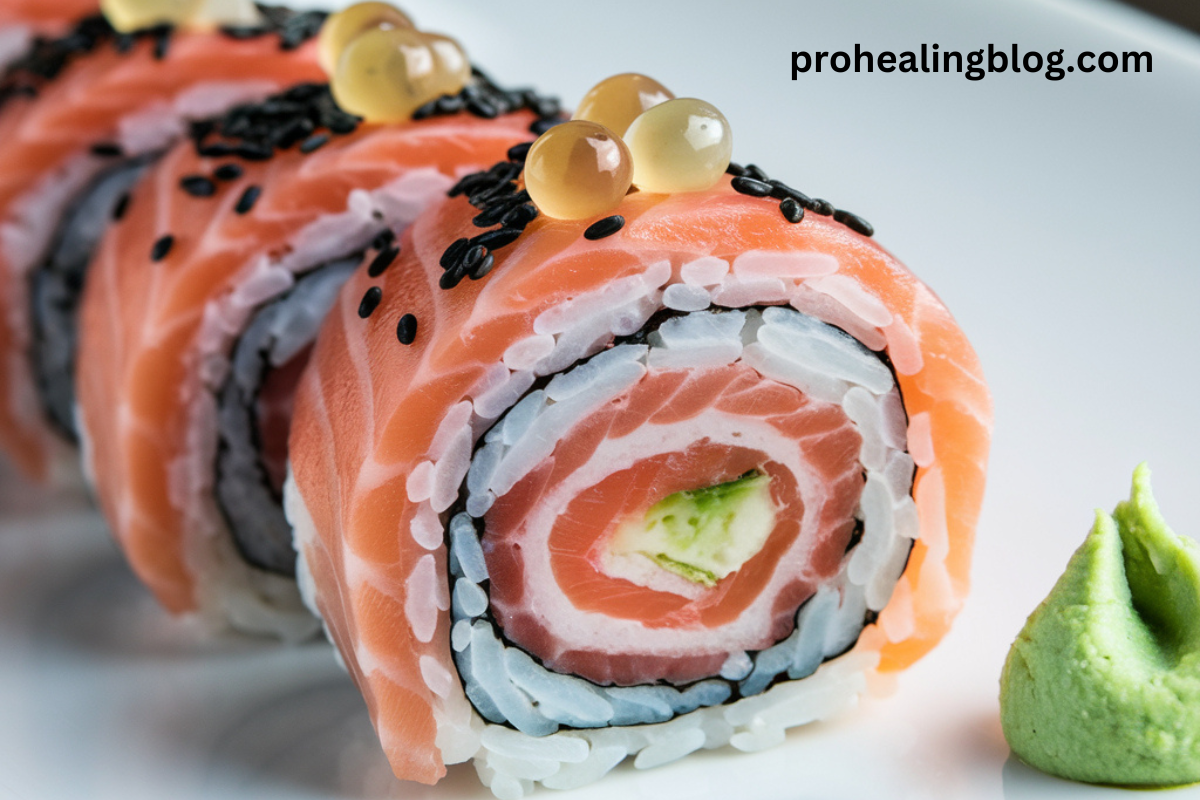Masago, a bright orange sushi topping, is beloved by food enthusiasts worldwide. With its unique flavor and vibrant color, masago has become a staple in Japanese cuisine. But what exactly is masago? How does it compare to caviar? And what makes it such a sought-after ingredient? Let’s dive into these questions and more.
What Is Masago?
Masago, pronounced “muh-sah-go,” refers to the roe or eggs of the capelin fish, a small forage fish that thrives in cold ocean waters. Chefs harvest these tiny eggs for their rich flavor and culinary versatility. They are commonly used as a topping or ingredient in sushi rolls, where they not only enhance the texture but also add a vibrant pop of color to dishes.
Unlike some other types of fish roe, muhsahgo has a more subtle taste. Its flavor is slightly salty and mildly sweet, making it an excellent complement to the savory flavors of sushi and sashimi.
Is Masago Actually Fish Eggs?
Yes, it is indeed fish eggs. Specifically, it comes from the female capelin fish. The eggs are harvested during the spawning season, processed, and often flavored or colored to enhance their appeal. While they are smaller and less expensive than other types of roe, masago remains a popular choice for its flavor and versatility.
What Is in Masago Sushi?
Muhsahgo sushi typically includes a combination of rice, seaweed, fresh fish, and a topping of muhsahgo. The eggs add a delightful crunch and flavor to each bite. Chefs often use masago as a garnish, either on the outer layer of a sushi roll or sprinkled over sashimi. Muhsahgo is also a key ingredient in some specialty rolls and sauces, where its mild flavor enhances the overall taste of the dish.
Masago vs. Caviar: What’s the Difference?
Muhsahgo and caviar are both types of fish roe, but they differ in several key ways:
- Source: Muhsahgo comes from capelin fish, while caviar traditionally comes from sturgeon fish.
- Size and Texture: Muhsahgo eggs are smaller and less delicate than caviar. They have a slight crunch, whereas caviar is known for its soft, buttery texture.
- Price: Caviar is often considered a luxury item and is significantly more expensive than masago.
- Flavor: Muhsahgo has a mild, slightly salty flavor. In contrast, caviar offers a more complex and richer taste.
Both are excellent in their own right, but masago is a more accessible option for everyday meals and casual sushi dishes.
What Does Masago Taste Like?
Muhsahgo’s flavor is subtle yet distinct. It is slightly salty, with a hint of sweetness and a mild fishy undertone. The texture is another highlight; the tiny eggs provide a light crunch that contrasts beautifully with the softness of sushi rice and fish.
Because of its mild taste, muhsahgo pairs well with a variety of ingredients. It enhances the flavor of seafood dishes without overpowering them, making it a versatile addition to any recipe.
Health Benefits of Masago
Muhsahgo is more than just a tasty sushi topping. It also offers several health benefits:
- Rich in Nutrients: It is a good source of protein, omega-3 fatty acids, and essential vitamins like vitamin B12.
- Low in Calories: Its low-calorie count makes it an excellent choice for those looking to enjoy flavorful food without overindulging.
- Heart Health: The omega-3 fatty acids in muhsahgo can help support heart health by reducing inflammation and improving cholesterol levels.
- Bone and Immune Support: It contains important minerals like selenium, which supports bone health and boosts the immune system.
How Is Masago Used in Cooking?
Muhsahgo is a versatile ingredient used in many culinary applications, including:
- Sushi: Sprinkled over sushi rolls or sashimi for added flavor and texture.
- Sauces: Mixed into creamy sauces to create a rich, umami-packed condiment for seafood dishes.
- Salads: Incorporated into seafood salads for a burst of color and crunch.
- Pasta and Rice: Used as a garnish for pasta or rice dishes to elevate their visual appeal and taste.
- Tacos and Bowls: Added as a topping for fusion dishes like poke bowls or sushi tacos.
Potential Side Effects of Masago
While muhsahgo is generally safe and nutritious, there are some considerations to keep in mind:
- Sodium Content: It is naturally high in sodium. Overconsumption can lead to water retention or increased blood pressure.
- Allergic Reactions: Individuals with seafood allergies should avoid masago, as it may trigger allergic responses.
- Mercury Levels: Like other seafood, it may contain trace amounts of mercury. Pregnant women and young children should consume it in moderation.
How to Store Masago
To maintain its freshness, store muhsahgo in the refrigerator and use it within a few days of opening. For longer storage, you can freeze masago in an airtight container for up to six months. Thaw it in the refrigerator before use to preserve its texture and flavor.
Why Is Masago So Popular?
Masago’s popularity stems from its unique combination of taste, texture, and visual appeal. It’s affordable compared to other types of roe, making it accessible to a wider audience. Additionally, its versatility in cooking and garnishing makes it a favorite among chefs and home cooks alike.
Where to Buy Masago
Muhsahgo is commonly available at Japanese grocery stores, seafood markets, and online retailers. When purchasing masago, look for a fresh product with a vibrant color and mild aroma. Avoid masago that appears dull or has an overly fishy smell.
Conclusion
Muhsahgo is more than just a sushi ingredient; it’s a flavorful, nutritious, and versatile addition to countless dishes. Whether you’re a sushi enthusiast or a culinary adventurer, masago can elevate your meals with its unique taste and texture. With its affordability and health benefits, it’s no wonder masago continues to be a favorite in kitchens around the world.
So, the next time you enjoy sushi or experiment with seafood dishes, consider adding muhsahgo to your recipe. Its delightful crunch and vibrant flavor are sure to impress.






